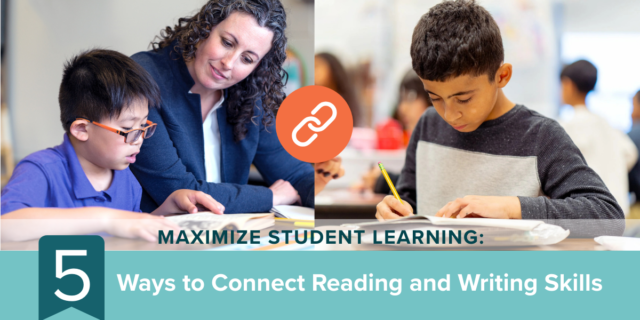
By Jennifer Serravallo
One of the questions I hear most often from teachers is What note taking system do you recommend for conferring? It is quickly followed by What exactly do you write down? Today on the Heinemann blog, I share some of my quick and helpful tips!
With a class of 25 or more students, each reading a different book, each working on individual goals and strategies, it’s too much for a teacher to keep it all in their head. Taking notes during a conference or small group helps you record the most important happenings during each conference, which then sets you up to link one conference to the next and to stay focused on each individual student’s strengths and needs.
Here are some general note-taking tips:
- Keep each student’s notes on a separate page so you can see their progress over time. Even when you meet with them in a group, keep notes on them as individuals.
- Format your note taking form to include any information you like to have at-the-ready to scaffold your decision-making, such as questions to ask or a skill progression to keep in mind.
- Record the date and the strategy you taught.
- Jot strengths and possible next steps.
 On this form, a skill progression runs down the left hand side to keep me focused on how to support Lucas’s growth within his goal. Questions at the top focus my research during a conference. I take notes on both his strengths, the strategy I taught, and what he still needs to work on.
On this form, a skill progression runs down the left hand side to keep me focused on how to support Lucas’s growth within his goal. Questions at the top focus my research during a conference. I take notes on both his strengths, the strategy I taught, and what he still needs to work on.
My organizational system for notes has changed over the years. For many years I used a binder with a tabbed section for each student. This allowed me to see an individual’s progress over time but had its drawbacks: I couldn’t share my notes with other teachers very easily, and when I met with students in groups, I had to flip between sections to write notes for each student.
The solution I found was to move student notes out of binders and into two pocket folders—one side for reading, one for writing. I kept the folders in a basket near the classroom door and I’d grab the ones I needed for that day. When notes are kept in folders (rather than binders or notebooks), they are portable and can travel with the student. This is especially helpful in co-taught classrooms or for students who see additional teachers for intervention or extra support. Other teachers could use the notes in the folder as a way to catch up on what the student and I had worked on, and also to record notes on that same page, allowing me to see what the student had done with the other teacher. This new system worked out brilliantly, ensuring consistency of messaging between all the adults that worked with each student.
 When notes are kept in folders (rather than binders or notebooks), they are portable and can travel with the student. This is especially helpful in co-taught classrooms or for students who see additional teachers for intervention or extra support.
When notes are kept in folders (rather than binders or notebooks), they are portable and can travel with the student. This is especially helpful in co-taught classrooms or for students who see additional teachers for intervention or extra support.
This “separate page for each student in a folder” idea also made my small group note taking so much easier: Rather than flipping between sections in a binder, I could now open up students’ individual folders in front of them and take notes in each as I made my way around from student to student.
Although I prefer folders, paper, and pen, some teachers might prefer digital note taking. Free apps and extensions like Google Keep or Evernote, or purchasable apps like Confer or Pensieve are also popular. These all would allow the same note taking on an individual, and shareability with other adults who work with that student. What’s most important is that the forms and format work for you, so try a few until you find what you like.
The most important final advice I have for you is to remember that when you meet with kids, really listen to them and try to help them. The notes are important, but shouldn’t get in the way of the intimate conversation that a conference is. You can always stick around for a minute after a conference concludes to take your quick notes instead of writing during the conference if you find it distracts you or changes the tone of the conference.
In her book A Teacher’s Guide to Reading Conferences, Jen offers readers a sneak peek into the note taking that happens during each of the nine conferences that are available on video in the online resources. Note taking forms aligned to each of the 13 goals, complete with skill progressions to each decision making as teachers work on supporting development within each goal, are available as a free download when you register your book.

Jennifer Serravallo is the author of the New York Times bestseller The Reading Strategies Book and The Writing Strategies Book, which have been translated into Spanish, French, and Chinese. These and her other popular books and resources help teachers make goal-directed responsive strategy instruction, conferring, and small group work doable in every classroom. Her newest titles are Teaching Writing in Small Groups, A Teacher’s Guide to Reading Conferences, Understanding Texts and Readers, and the assessment and teaching resource Complete Comprehension for Fiction and Nonfiction.
Jen is a frequently invited speaker at national and regional conferences and travels throughout the US and Canada to provide full-day workshops and to work with teachers and students in classrooms. She is also an experienced online educator who regularly offers live webinar series and full-day online workshops, and is the creator of two self-paced asynchronous online courses, most recently Strategies in Action: Reading and Writing Methods and Content.
Jen began her career in education as an NYC public school teacher. Now as a consultant, she has spent the last fifteen+ years helping teachers across the country create literacy classrooms where students are joyfully engaged, and the instruction is meaningfully individualized to students' goals. Jen is also a member of Parents Magazine Board of Advisors for education and literacy.
Jen holds a BA from Vassar College and an MA from Teachers College, where she has also taught graduate and undergraduate classes.
Learn more about Jen and her work at Hein.pub/serravallo, on Twitter @jserravallo, on Instagram @jenniferserravallo, or by joining The Reading and Writing Strategies Facebook Community


